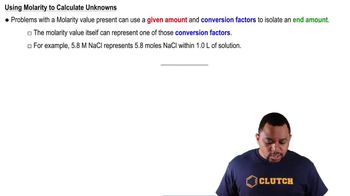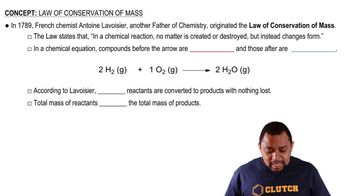Here are the essential concepts you must grasp in order to answer the question correctly.
Dilution
Dilution is the process of reducing the concentration of a solute in a solution, typically by adding more solvent. The relationship between the initial and final concentrations and volumes of a solution can be described by the dilution equation, C1V1 = C2V2, where C1 and V1 are the initial concentration and volume, and C2 and V2 are the final concentration and volume.
Recommended video:
Molarity
Molarity (M) is a measure of concentration defined as the number of moles of solute per liter of solution. It is a crucial concept in chemistry for quantifying how much solute is present in a given volume of solution, allowing for calculations involving reactions, dilutions, and solution preparations.
Recommended video:
Conservation of Mass
The principle of conservation of mass states that mass is neither created nor destroyed in a chemical reaction. In the context of dilution, this means that the amount of solute before dilution (moles of NaOH) remains constant, allowing us to relate the initial and final states of the solution through the dilution equation.
Recommended video:
Law of Conservation of Mass
 Verified step by step guidance
Verified step by step guidance


